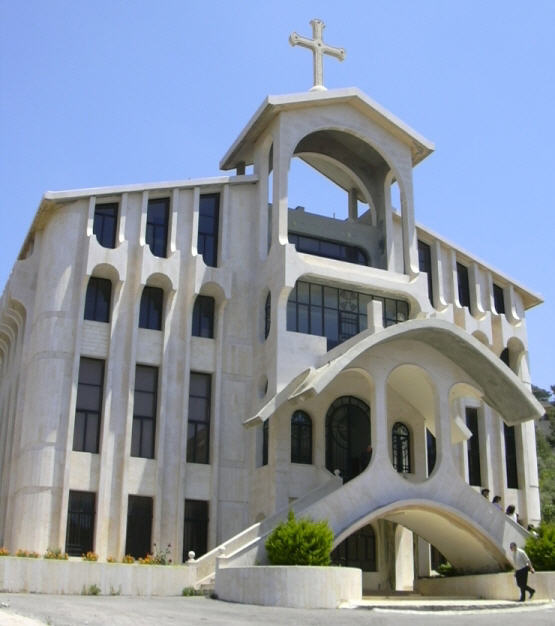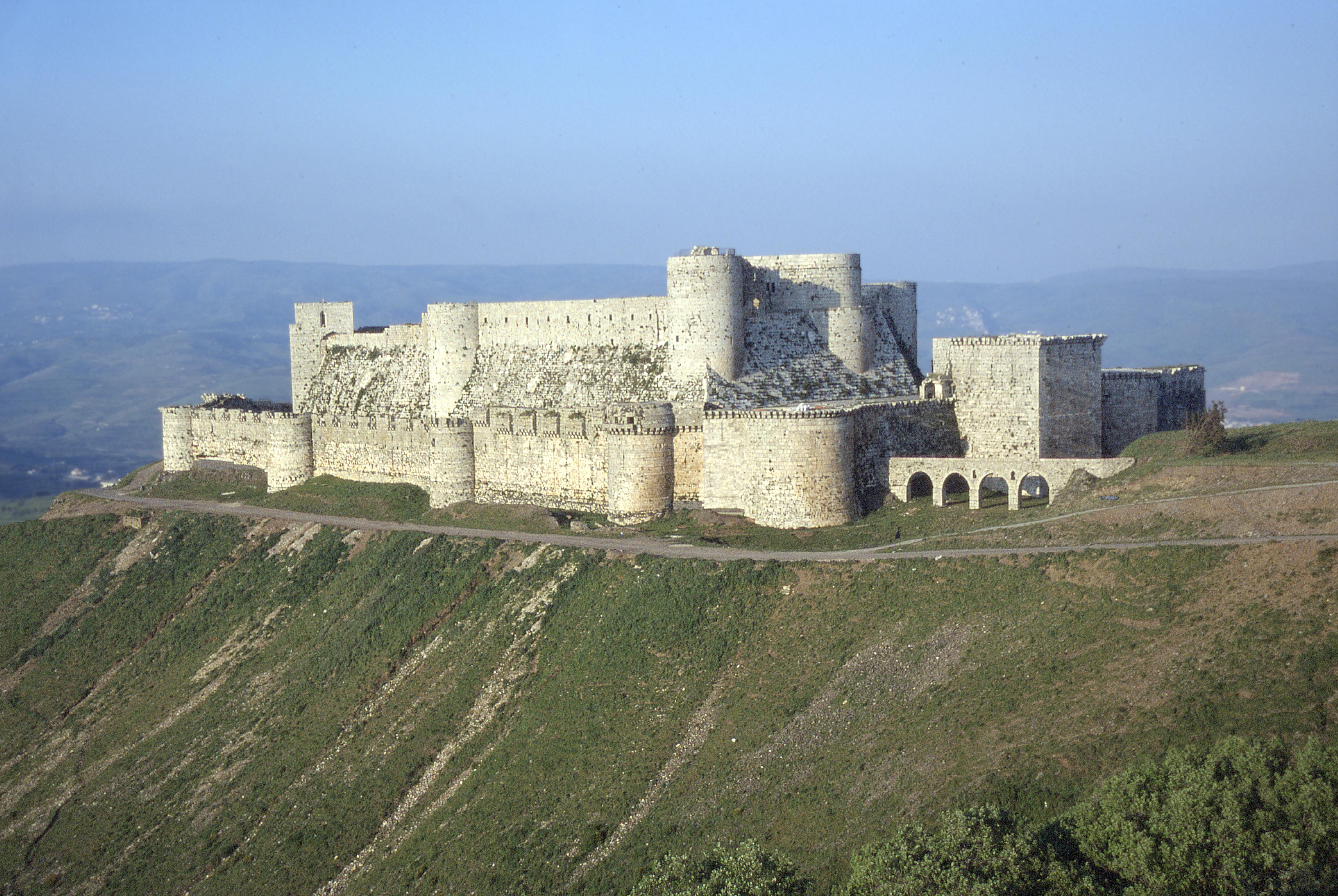|
Al-Husn, Syria
Al-Husn ( ar, الحصن, also spelled al-Hisn) is a large village in northwestern Syria, administratively part of the Homs Governorate, located west of Homs and north of the border with Lebanon. Nearby localities include al-Huwash to the east, Anaz, Syria, Anaz to the southeast, Aridah to the south, al-Zarah to the southwest, Zweitina to the west, al-Nasirah, Syria, al-Nasirah and Marmarita to the northwest, Muqlus to the north and Mazinah to the northeast. According to the Central Bureau of Statistics (Syria), Syria Central Bureau of Statistics (CBS), al-Husn had a population of 8,980 in the 2004 census. It is the largest village in the al-Huwash ''nahiyah'' ("subdistrict"), which consisted of 19 localities with a collective population of 24,684 in 2004. [...More Info...] [...Related Items...] OR: [Wikipedia] [Google] [Baidu] |
Governorates Of Syria
Syria is a unitary state, but for administrative purposes, it is divided into fourteen governorates, also called provinces or counties in English (Arabic ''muḥāfaẓāt'', singular '' muḥāfaẓah''). The governorates are divided into sixty-five districts (''manāṭiq'', singular '' minṭaqah''), which are further divided into subdistricts (''nawāḥī'', singular '' nāḥiyah''). The ''nawāḥī'' contain villages, which are the smallest administrative units. Each governorate is headed by a governor, appointed by the president, subject to cabinet approval. The governor is responsible for administration, health, social services, education, tourism, public works, transportation, domestic trade, agriculture, industry, civil defense, and maintenance of law and order in the governorate. The minister of local administration works closely with each governor to coordinate and supervise local development projects. The governor is assisted by a provincial council, all of who ... [...More Info...] [...Related Items...] OR: [Wikipedia] [Google] [Baidu] |
Marmarita
Marmarita ( ar, مرمريتا, syc, ܡܪܡܪܝܬܐ, ) is a village in northwestern Syria, located west of Homs. Marmarita is one of the largest villages in Wadi al-Nasara ("Valley of the Christians"), a region north of Talkalakh. In 2004, Marmarita had a population of 2,206, according to the Central Bureau of Statistics (CBS). Its inhabitants are predominantly Greek Orthodox and Greek Catholic Christians and is one of the largest Christian villages in the Wadi al-Nasara ('valley of the Christians'). Marmarita is a popular summer destination and tourist attraction in Syria. The village has been part of the Homs Governorate since 1953; prior to that, it was part of the Latakia Governorate. The village has three Greek Orthodox Church, a Greek Catholic Church and a Protestant Church. Etymology The name Marmarita is believed to be derived from the Syriac word ''Marmanitha'', meaning "a place that overlooks" in possible reference to Marmarita's situation above the Akkar Plateau an ... [...More Info...] [...Related Items...] OR: [Wikipedia] [Google] [Baidu] |
Battle Of Hosn
The Battle of Hosn was a one-day battle during the Syrian Civil War around the village of Hosn and its proper center in the 900-year-old medieval Crusader castle of Krak des Chevaliers, a UNESCO world heritage site, that had been in the hands of rebel fighters along with Hosn itself since 2012. The Syrian Army's objective during the battle was to sever the rebels' supply routes for recruits and weapons coming in and out of Lebanon. On the morning of 20 March, fighting started around early dawn with a heavy bombardment of the medieval castle where 300 rebels were believed to reside. The town of Hosn itself was also shelled. According to an opposition activist, an agreement for safe conduct of the rebels to Lebanon had been reached the previous day. The military commander leading the battle denied that an agreement had been reached. He stated the military had refused to grant the rebels holed up in the castle safe conduct from the fortress and made the final push into it after s ... [...More Info...] [...Related Items...] OR: [Wikipedia] [Google] [Baidu] |
Urban Sprawl
Urban sprawl (also known as suburban sprawl or urban encroachment) is defined as "the spreading of urban developments (such as houses and shopping centers) on undeveloped land near a city." Urban sprawl has been described as the unrestricted growth in many urban areas of housing, commercial development, and roads over large expanses of land, with little concern for urban planning. In addition to describing a special form of urbanization, the term also relates to the social and environmental consequences associated with this development. Medieval suburbs suffered from loss of protection of city walls, before the advent of industrial warfare. Modern disadvantages and costs include increased travel time, transport costs, pollution, and destruction of the countryside. The cost of building urban infrastructure for new developments is hardly ever recouped through property taxes, amounting to a subsidy for the developers and new residents at the expense of existing property taxpayers. In ... [...More Info...] [...Related Items...] OR: [Wikipedia] [Google] [Baidu] |
Krak Des Chevaliers
Krak des Chevaliers, ar, قلعة الحصن, Qalʿat al-Ḥiṣn also called Hisn al-Akrad ( ar, حصن الأكراد, Ḥiṣn al-Akrād, rtl=yes, ) and formerly Crac de l'Ospital; Krak des Chevaliers or Crac des Chevaliers (), is a medieval castle in Syria and one of the most important preserved medieval castles in the world. The site was first inhabited in the 11th century by Kurds, Kurdish troops garrisoned there by the Mirdasid dynasty, Mirdasids. In 1142 it was given by Raymond II of Tripoli, Raymond II, County of Tripoli, Count of Tripoli, to the order of the Knights Hospitaller. It remained in their possession until it fell in 1271. The Hospitallers began rebuilding the castle in the 1140s and were finished by 1170 when an earthquake damaged the castle. The order controlled a number of castles along the border of the County of Tripoli, a Crusader state, state founded after the First Crusade. Krak des Chevaliers was among the most important, and acted as a center ... [...More Info...] [...Related Items...] OR: [Wikipedia] [Google] [Baidu] |
Melkite Greek Catholic Church
el, Μελχιτική Ελληνική Καθολική Εκκλησία , image = Melkite Greek Catholic Church, Damascus, Syria.jpg , imagewidth = 200px , alt = , caption = , abbreviation = , type = Antiochian , main_classification = Eastern Catholic , orientation = Melkite , scripture = , theology = Catholic Theology , polity = Episcopal , governance = , structure = , leader_title = Pope , leader_name = Francis , leader_title1 = Primate , leader_name1 = Patriarch Youssef Absi , leader_title2 = , leader_name2 = Cyril VI Tanas , leader_title3 = , leader_name3 = , fellowships_type = , fellowships = , fellowships_type1 = , fellowships1 = , division_type = , division = , division_type1 = , division1 = , divisi ... [...More Info...] [...Related Items...] OR: [Wikipedia] [Google] [Baidu] |
Eli Smith
Eli Smith (born September 13, 1801, in Northford, Connecticut, to Eli and Polly (Whitney) Smith, and died January 11, 1857, in Beirut, Lebanon) was an American Protestant missionary and scholar. He graduated from Yale College in 1821 and from Andover Theological Seminary in 1826. He worked in Malta until 1829, then in company with H. G. O. Dwight traveled through Armenia and Georgia to Persia. They published their observations, ''Missionary Researches in Armenia'', in 1833 in two volumes. Eli Smith settled in Beirut in 1833. Along with Edward Robinson, he made two trips to the Holy Land in 1838 and 1852, acting as an interpreter for Robinson in his quest to identify and record biblical place names in Palestine, which was subsequently published in Robinson's ''Biblical Researches in Palestine''. He is known for bringing the first printing press with Arabic type to Syria. He went on to pursue the task which he considered to be his life's work: translation of the Bible into Arabic. ... [...More Info...] [...Related Items...] OR: [Wikipedia] [Google] [Baidu] |
Wadi Al-Nasara
Wadi al-Nasara ( ar, وادي النصارى / ALA-LC: ''Wādī an-Naṣārá'', Greek: Κοιλάδα των Χριστιανών, ''Koiláda ton Christianón'', which both mean "Valley of Christians") is an area in western Syria, close to the Lebanese border and administratively belonging to the governorate of Homs. Most people in the area are Greek Orthodox Christians. A large part of the valley's population comes originally from Lebanon's northern Christian villages. Their migration to the nearby valley in Syria began in the mid-19th century as a result of the Mount Lebanon Civil War. The area of Wadi-Al Nasara is ecclesiastically under the Archdiocese of Akkar, which has its seat in Cheikh Taba, Lebanon. The current Greek-Orthodox Metropolitan of Akkar and Wadi al-Nasara and its dependencies (Safita and Tartus) is Mgr Basilius Mansour. Touristic Attractions Wadi al-Nasara used to be a popular tourist site before the outbreak of the Syrian civil war. Among its tourist ... [...More Info...] [...Related Items...] OR: [Wikipedia] [Google] [Baidu] |
Christian
Christians () are people who follow or adhere to Christianity, a monotheistic Abrahamic religion based on the life and teachings of Jesus Christ. The words ''Christ'' and ''Christian'' derive from the Koine Greek title ''Christós'' (Χριστός), a translation of the Biblical Hebrew term ''mashiach'' (מָשִׁיחַ) (usually rendered as ''messiah'' in English). While there are diverse interpretations of Christianity which sometimes conflict, they are united in believing that Jesus has a unique significance. The term ''Christian'' used as an adjective is descriptive of anything associated with Christianity or Christian churches, or in a proverbial sense "all that is noble, and good, and Christ-like." It does not have a meaning of 'of Christ' or 'related or pertaining to Christ'. According to a 2011 Pew Research Center survey, there were 2.2 billion Christians around the world in 2010, up from about 600 million in 1910. Today, about 37% of all Christians live in the A ... [...More Info...] [...Related Items...] OR: [Wikipedia] [Google] [Baidu] |
Sunni Muslims
Sunni Islam () is the largest branch of Islam, followed by 85–90% of the world's Muslims. Its name comes from the word '' Sunnah'', referring to the tradition of Muhammad. The differences between Sunni and Shia Muslims arose from a disagreement over the succession to Muhammad and subsequently acquired broader political significance, as well as theological and juridical dimensions. According to Sunni traditions, Muhammad left no successor and the participants of the Saqifah event appointed Abu Bakr as the next-in-line (the first caliph). This contrasts with the Shia view, which holds that Muhammad appointed his son-in-law and cousin Ali ibn Abi Talib as his successor. The adherents of Sunni Islam are referred to in Arabic as ("the people of the Sunnah and the community") or for short. In English, its doctrines and practices are sometimes called ''Sunnism'', while adherents are known as Sunni Muslims, Sunnis, Sunnites and Ahlus Sunnah. Sunni Islam is sometimes referre ... [...More Info...] [...Related Items...] OR: [Wikipedia] [Google] [Baidu] |
Nahiyah
A nāḥiyah ( ar, , plural ''nawāḥī'' ), also nahiya or nahia, is a regional or local type of administrative division that usually consists of a number of villages or sometimes smaller towns. In Tajikistan, it is a second-level division while in Syria, Iraq, Lebanon, Jordan, Xinjiang, and the former Ottoman Empire, where it was also called a '' bucak'', it is a third-level or lower division. It can constitute a division of a ''qadaa'', ''mintaqah'' or other such district-type of division and is sometimes translated as " subdistrict". Ottoman Empire The nahiye ( ota, ناحیه) was an administrative territorial entity of the Ottoman Empire, smaller than a . The head was a (governor) who was appointed by the Pasha. The was a subdivision of a Selçuk Akşin Somel. "Kazâ". ''The A to Z of the Ottoman Empire''. Volume 152 of A to Z Guides. Rowman & Littlefield, 2010. p. 151. and corresponded roughly to a city with its surrounding villages. s, in turn, were divided into ... [...More Info...] [...Related Items...] OR: [Wikipedia] [Google] [Baidu] |







